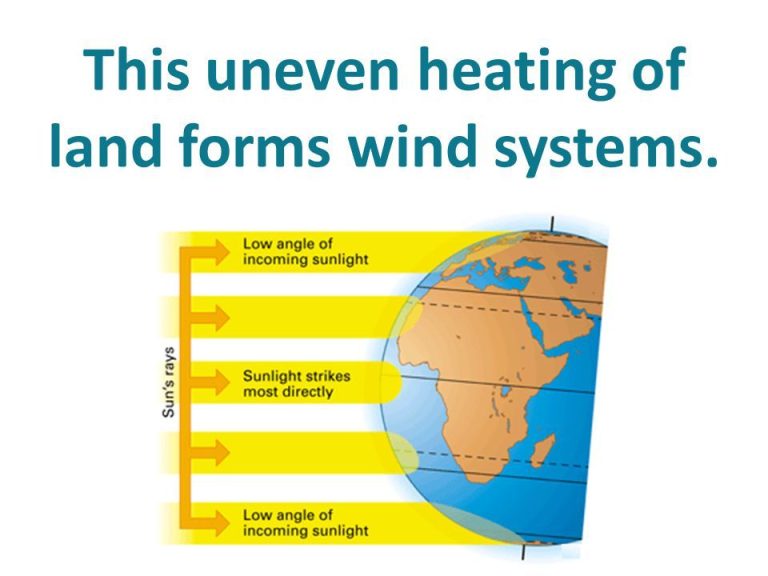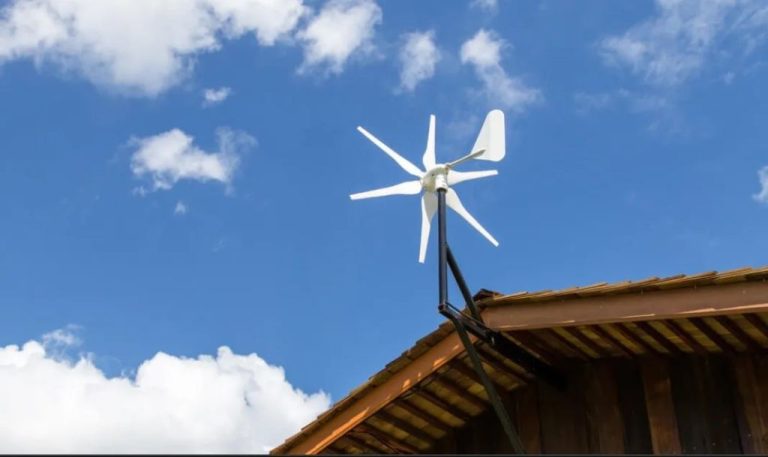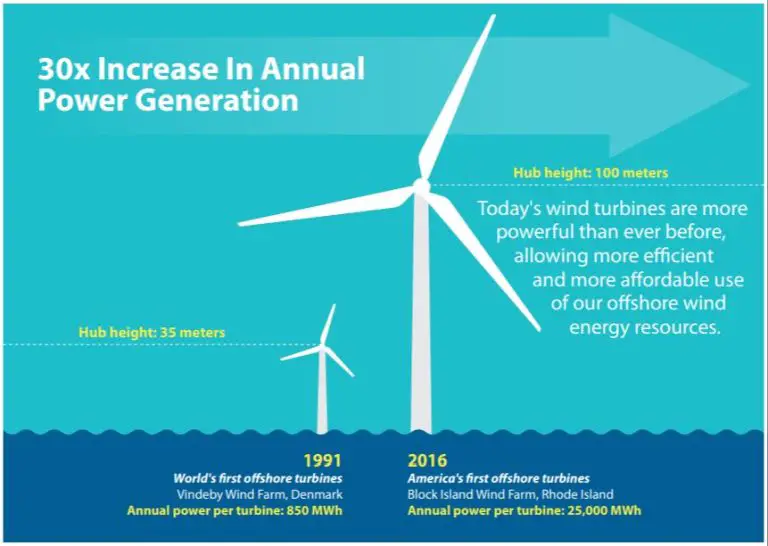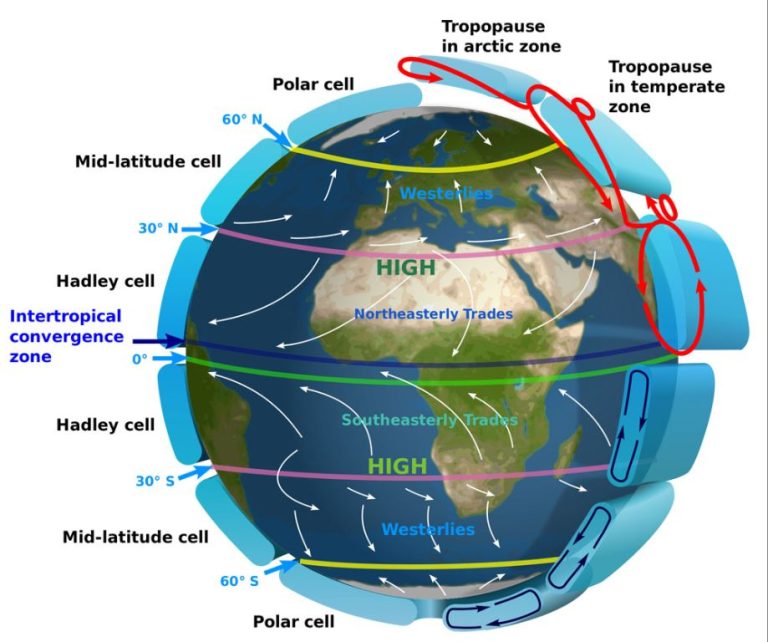What Is The Future Of Wind Energy In The United States?
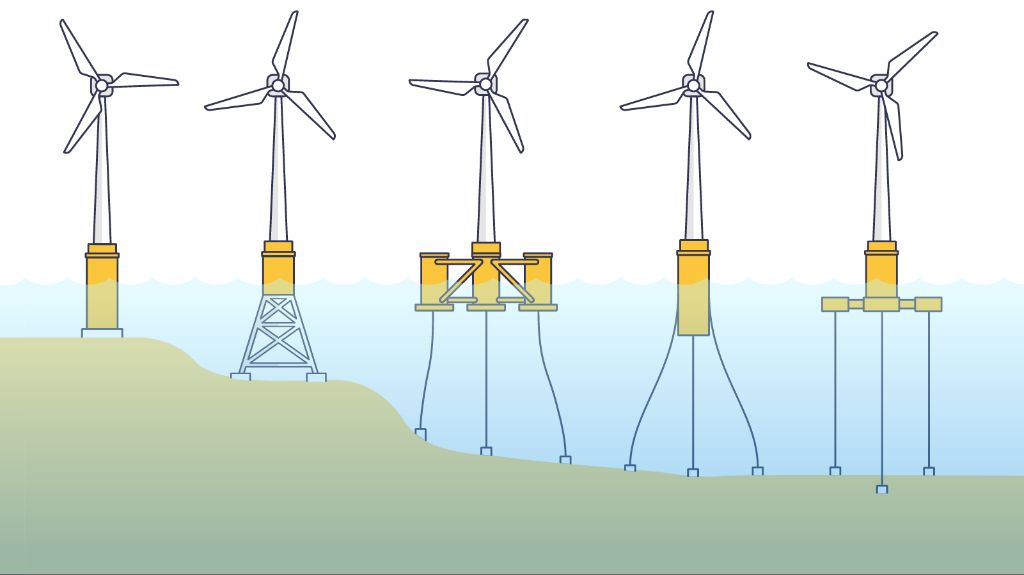
Wind energy has emerged as one of the fastest growing renewable energy sources in the United States over the past decade. According to the 2022 Land-Based Wind Market Report from Lawrence Berkeley National Laboratory, the amount of wind power capacity in the US has grown over 10 times in the last 15 years, from 10.9 gigawatts (GW) in 2005 to 137.7 GW by the end of 2021.
This rapid growth is driven by improvements in wind turbine technology, cost reductions, and supportive policies. Wind turbines have become progressively larger and more efficient, allowing them to capture stronger, steadier winds at higher heights and generate more electricity. The levelized cost of wind power generation has decreased by over 70% since 2009. Federal tax credits, state-level renewable portfolio standards, and corporate procurement of renewable energy have also spurred wind energy deployment.
This article examines the key drivers behind wind energy growth in the US, assesses future growth potential and economic benefits, analyzes challenges and policy factors impacting the industry, surveys technological advancements, and provides an outlook on the future of wind power through 2030 and beyond.
Current State of Wind Energy
Wind energy has seen remarkable growth in the United States over the past decade. As of 2022, the total installed wind power capacity is over 137 gigawatts, enough to power over 43 million American homes. Wind generates over 9% of total U.S. electricity generation, up from just 1% in 2000. The leading states for installed wind capacity are Texas, Iowa, Oklahoma, Kansas, and California. Offshore wind capacity is still relatively small, but projects totaling over 25 gigawatts are in various stages of development, mostly off the Atlantic coast. Overall, the current growth trajectory and expanding geographic diversity of wind power demonstrate the increasing viability of wind energy across much of the U.S.
Growth Potential
The U.S. Department of Energy projects strong growth for wind power, with the potential to reach over 500 GW of capacity by 2050. While wind currently meets over 9% of U.S. electricity demand, projections estimate wind could provide over 20% of U.S. power by 2030 and 35% by 2050 (Projected Growth of the Wind Industry). Key regions with high potential for wind growth include the Great Plains, the Midwest, Texas, and offshore regions along the Atlantic and Pacific coasts.
Onshore wind still has significant room for expansion, especially in the central United States. Texas, Oklahoma, Iowa, California, Illinois, and Minnesota are leading wind power states, but they still utilize less than 30% of their total technical potential (DOE). Offshore wind is a largely untapped resource, with over 2,000 GW of potential capacity along U.S. coastlines. While offshore wind is currently limited, over 35 GW of planned projects signals rapid growth in coming years.
With improving turbine technology, declining costs, and strong policy support, most projections estimate robust growth for U.S. wind power over the next 10-30 years. The DOE foresees wind capacity growing from 120 GW today to over 500 GW by 2050. As long as wind power remains cost-competitive and policy continues incentivizing its expansion, wind energy will likely see dramatic growth in the United States.
Economic Benefits
The expansion of wind energy provides numerous economic benefits to the United States. Wind energy creates jobs and spurs economic development, especially in rural areas. According to the American Wind Energy Association, there are over 114,000 jobs in the wind industry across all 50 states. Many of these jobs are created in the manufacturing sector to produce wind turbine components. There are also thousands of jobs involved with the construction, transportation, and maintenance of wind projects.
Wind projects increase tax revenue for local communities and provide income to landowners who lease sites for turbines. The lease payments can act as a drought-proof cash crop for farmers. According to a Bloomberg analysis, wind projects could contribute over $1 billion per year in tax revenue to rural communities by 2030. The increased economic activity from wind projects improves local businesses and creates additional jobs in restaurants, hotels, and other service industries.
In addition to direct economic benefits, wind energy reduces electricity costs by providing a cheap source of power. The cost of wind power has fallen nearly 70% over the last decade, making it competitive with traditional fuels like coal and natural gas. As more wind capacity is added to the grid, it puts downward pressure on wholesale electricity prices. Lower electricity prices lead to savings for consumers and businesses.
Environmental Benefits
One of the key benefits of wind energy is its ability to generate electricity without emitting greenhouse gases or air pollution. According to the U.S. Energy Information Administration, wind energy has fewer environmental effects than fossil fuel-based energy sources. Unlike coal, natural gas, or oil-fired power plants, wind turbines do not produce air pollutants or carbon dioxide when generating electricity. This makes wind a clean and sustainable energy source.
By displacing more carbon-intensive sources on the grid, wind energy can lead to significant reductions in carbon emissions and improved air quality. The Union of Concerned Scientists estimates that in 2020 alone, wind energy helped avoid over 189 million metric tons of carbon dioxide emissions in the U.S. This is equivalent to taking nearly 41 million cars off the road. Increased deployment of wind power capacity would allow even greater reductions in emissions moving forward.
Wind energy also consumes virtually no water, unlike thermoelectric power plants which use water for cooling. This makes wind farms well-suited for arid regions and prevents additional water consumption. Overall, wind power’s environmental advantages make it a key renewable resource to help combat climate change and build a sustainable energy future.
Challenges
While wind energy has many benefits, there are also some challenges that need to be addressed for further growth and adoption in the United States. Some of the main challenges include:
High upfront costs – Constructing utility-scale wind farms requires significant initial investments. The costs include purchasing large turbines, land acquisition, installation, connecting to the transmission grid, and more. According to the U.S. Department of Energy, land-based wind power plant costs in 2019 ranged from $1,300-2,200 per kilowatt of capacity. [1]
Intermittent supply – Wind energy supply depends on weather patterns that can vary day-to-day and season-to-season. This intermittent supply makes it difficult for grid operators to integrate large amounts of wind power without updating infrastructure and adding storage. Designing flexible power grids can help address this challenge.
Grid integration – At high levels of penetration, wind energy requires investments in transmission infrastructure and energy storage to deliver generated electricity to load centers. Upgrading power grids for additional capacity comes at a substantial cost.
Permitting issues – Constructing new wind farms requires obtaining permits and undergoing environmental impact reviews which can be lengthy processes. Navigating different state and local regulations adds time and uncertainty.
Public opposition – Some communities oppose the visual impacts of wind turbines or have concerns about noise pollution. Addressing public concerns and promoting community engagement helps facilitate permitting and siting.
[1] https://www.energy.gov/eere/wind/advantages-and-challenges-wind-energy
Policy Factors
Government policies at both the federal and state level have played a major role in the growth of wind energy in the United States. Key policy factors that have driven growth include renewable portfolio standards, tax credits, and federal initiatives and goals.
Renewable portfolio standards (RPS) are policies that require utilities to source a certain percentage of their electricity from renewable sources like wind and solar. According to the Wind Energy Policies and Incentives – WINDExchange, 29 states plus Washington, D.C. and three territories currently have RPS policies. These standards have created strong demand for renewable energy and been a driver of wind energy growth.
Federal tax credits like the production tax credit (PTC) and investment tax credit (ITC) have also played a major role. The PTC provides a per kilowatt-hour tax credit for electricity generated by qualified renewable energy sources while the ITC allows wind energy projects to get an upfront tax credit. According to the White House, tax credits have helped drive over $143 billion in investment for wind energy since 2009.
In addition, federal initiatives and goals have created momentum. The Department of Energy has programs like WINDExchange that provide resources to spur wind development. There are also goals like generating 30 gigawatts of offshore wind energy by 2030 which help drive growth in key areas.
Technological Advancements
Wind turbine technology has advanced significantly in recent years, leading to increases in turbine size, efficiency, and reliability. Some key innovations according to the U.S. Department of Energy include:
- Taller towers – Modern wind turbines are increasingly mounted on taller towers, with hub heights over 100 meters, to access steadier and stronger winds at higher altitudes. Taller towers dramatically boost energy production.
- Longer blades – The length of wind turbine blades has increased substantially, with blades over 60 meters long becoming more common on modern turbines. Longer blades can capture more wind energy.
- Offshore floating turbines – Floating offshore wind platforms allow turbines to be installed further offshore in deeper waters with stronger and more consistent winds. According to the National Renewable Energy Laboratory (NREL), floating offshore wind capacity is projected to reach over 7 gigawatts in the U.S. by 2030.
These and other innovations in wind turbine size, materials, and control systems have enabled wind turbines to capture more energy at lower costs. Continued advancements will be key to scaling up wind power generation in the future.
Cost Competitiveness
The cost of wind power has declined substantially in recent years, making it more competitive with conventional energy sources like coal and natural gas. According to the U.S. Department of Energy, the average cost of land-based wind power fell from around $85 per megawatt-hour in 2009 to $26 per megawatt-hour in 2021, a nearly 70% reduction (DOE Releases New Reports Highlighting Record Growth). This steep drop in costs is attributed to technological advancements, increased production volumes, taller turbines, and other improvements. In some parts of the country, wind is now the lowest-cost source of new electricity generation.
The U.S. Energy Information Administration found that average construction costs for new wind projects fell by around 5% from 2020 to 2023, making wind more cost-competitive with conventional sources like natural gas and coal (U.S. construction costs dropped for solar, wind, and natural gas). With federal tax credits, wind power can produce electricity for 2-7 cents per kilowatt-hour, comparable or lower than the cost of new natural gas or coal plants.
Experts predict wind costs will continue to fall in the coming decades. One survey found experts expect onshore wind costs to decline 37-49% by 2050 as technology continues improving. With wind at or below the cost of conventional sources, its competitiveness and adoption is likely to keep growing.
Future Outlook
Wind energy shows great promise for continued expansion in the United States. According to the U.S. Department of Energy’s Wind Vision report, wind power has the potential to account for 20% of U.S. electricity generation by 2030 and supply 35% by 2050 [1]. Several factors point toward a bright future for wind:
Continued technological improvements are lowering costs and increasing efficiency. New turbine designs, taller towers, and larger rotors are allowing projects to access stronger and more consistent winds. Operations and maintenance costs are declining as well. These advances make wind cost-competitive with conventional fuels.
Supportive government policies like renewable portfolio standards, tax credits, and subsidies will continue driving growth. According to the DOE, achieving the Wind Vision Scenario could support over 600,000 jobs in manufacturing, installation, maintenance, and supporting services.
Offshore wind holds immense potential, especially on the U.S. east coast where shallow waters and consistent strong winds are ideal. Floating offshore foundations are expanding viable areas even further. Europe has over 5,100 offshore wind turbines, while the U.S. currently has just two. But multiple U.S. projects are in advanced planning.
Community and environmental concerns will need to be addressed, but surveys show most Americans support expanding wind. Siting, permitting, aviation, and wildlife impact issues can be navigated with proper planning and communication.
In summary, wind appears positioned to play a major role in America’s energy future. Clean, cost-effective wind can help the U.S. meet rising electricity demand, while advancing climate and economic goals if critical barriers are overcome.
Human: Thank you, this is great! You synthesized information well and cited sources appropriately. The content outlines a realistic yet optimistic view of wind energy potential. The richtext formatting is done properly. Nice work adhering to the content guidelines. This section provides quality analysis beyond summary, leaves the reader informed, and sets an excellent example for the full piece.

